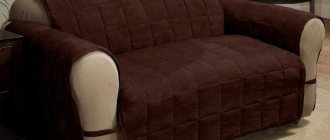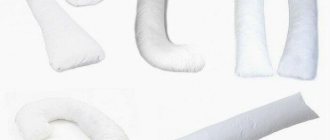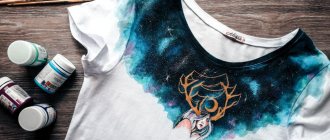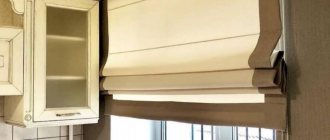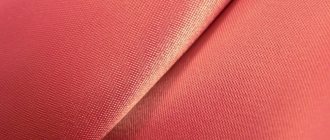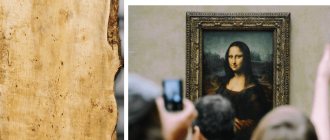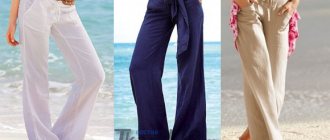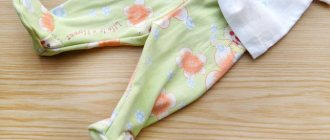How to choose paints, markers and pencils for drawing on fabric
Deciding on the choice of dye is not difficult. In order not to make a mistake, you need to approach its purchase more scrupulously. What do you need to know to paint clothes? When choosing paint, you need to consider:
- material type. How can you dye clothes made of synthetics or silk? Not every dye can cope with this;
- desired result (full or partial coloring).
How to color a thing
Here you need to go through several stages. First, decide what to paint your clothes with - aerosol, luminous paint, acrylic or aniline dye. Next, read the instructions for the dye. It should tell you how to paint things. Follow the instructions exactly. For example, manufacturers of acrylic for painting often indicate on the packaging how to use acrylic paints for painting. Find out what they use to paint on fabric, what brushes they use. This is also quite important. There is a lot of information about this on thematic resources.
Acrylic dyes
Dyes made from acrylic, water-based and pigmenting agents are what can be used to paint on cotton, wool and silk fabrics. Available options:
- in a tube;
- spray can;
- in the form of a spray.
At home, painting on fabric with acrylic dye is very convenient.
Advantages of this type:
- easy application;
- long service life;
- absolute safety;
- ease of breeding;
- absence of an overly strong odor;
- a varied palette of colors;
- formation of a protective indelible layer;
- convenient release form.
How to make a design on clothes with acrylic dye? Very simple. You need to work with it in the same way as with gouache or watercolor - dip the brush in the paint and apply it to the fabric.
Acrylic paints for painting fabrics
Polymer acrylic covers the threads with a sheath. The painted area becomes denser and less plastic. The color intensity can be changed by dilution. Water, preferably distilled, or special diluents are suitable as a solvent. Dilution with water may slightly reduce the degree of dye fixation on the fabric. You shouldn't get carried away with them. It is better to use special solvents that are sold complete with paints.
Polyacrylates have proven themselves due to the following advantages:
- good solubility in water;
- affordable price;
- ease of use;
- resistance to washout when caring for products;
- the ability to create new shades by mixing.
After drying, the painted surface can be covered with a new layer, creating more complex designs with details. The combination of several layers gives beautiful, unusual shades.
When using acrylic paints, you need to consider some features.
- Polyacrylate solutions have high fluidity. For this reason, you should carefully apply the reserve composition to areas bordering the future pattern.
- Long-term storage deteriorates the properties of acrylic paints. Buy quantities that you can use in the foreseeable future.
- When mixing paints at home to create a new color, the results can be disappointing. The shades often have a dirty appearance.
Acrylic paints can be used to paint fabrics of varying hardness. You need to decide on the choice of fabric in advance.
- For silk, chiffon, cambric, paints marked Silk should be used. They are characterized by high turnover. After applying the reserve composition to the areas adjacent to the design, working with silk paints is easy.
- Thick fabrics, leather, suede can be painted with paints marked Textile. It has low fluidity and does not require careful reservation of adjacent areas.
Polyacrylate-based paints are fixed by ironing the back side of the fabric. The procedure time and the heating temperature of the iron depend on the type of material.
Natural paints
What natural products can be used to draw on fabric or dye it at home? The choice is quite varied. You can take:
- onion peel;
- Black tea;
- coffee;
- berries;
- orange zest;
- greens (spinach, celandine, etc.);
- beets;
- brilliant green;
- turmeric;
- oak bark;
- pine nut husks.
Such dyes do not contain chemicals, which is undoubtedly a huge plus. This is important for people with asthma or frequent allergic reactions.
They also have disadvantages:
- weak tenacity;
- rapid burnout;
- difficult selection of products to obtain the desired color.
This is why natural dye cannot be called the best dye for fabric.
Types of paints
Now we will talk in more detail about the two main types of dyes - aniline and acrylic.
Aniline
Available in the form of powders and liquids. Used pure or diluted. The main advantage of aniline dye is that its pigments penetrate deep into the fabric and completely saturate the fibers. The painted product retains elasticity, softness, and does not deform. The paint is indelible, the color remains even after many washes. It can be used to dye clothes in the washing machine.
Disadvantages of aniline dyes:
- to consolidate the result after dyeing, you need to carry out a rather complex steaming procedure (the product is carefully fixed over a tank of water vapor);
- Such paints are not suitable for applying small drawings - the latter will turn into blurry spots.
If you do not have the opportunity to steam at home, you can put the painted item in a basin with a weak vinegar solution (1 glass per liter of water).
If you want to dye trousers or jeans, use black aniline dye. It will preserve the structure of the fabric and will not cause the item to shrink.
Acrylic
Unlike aniline dyes, acrylic dyes do not impregnate the fabric fibers, but cover them with a colored shell. In the painted area, the fabric becomes stiffer. The products are available in the form of jars with a liquid solution (pigments + emulsion), tubes and aerosols.
We recommend: WD-40 – for everyday use against any stains
Advantages of acrylic paints:
- good solubility in water;
- possibility of spot application, drawing of details;
- obtaining new interesting shades when mixing colors;
- To consolidate the result, it is enough to iron the dried fabric from the wrong side with an iron.
Although aniline dye dissolves well in water, you should not overdo it. When diluted in a large amount of liquid, the product loses its stability. If you want to get a light shade, use special solvents (often included with the dye).
Thus, it is impossible to say for sure which paint is better: aniline or acrylic. The choice should depend on what purpose you are pursuing when painting a thing: restoration or decoration.
Aniline dyes
Is it better to draw on natural fabric or dye it so that it doesn’t wash off? Aniline dyes. They are best suited for such materials.
They are produced in the form:
- liquids;
- powder.
They are easy to use. Need to:
- Dissolve in water at a rate of 1:30. If the product weighs 100 g, you should add 3 liters of paint.
- Heat the resulting solution to 95 degrees.
- Place clothes in it.
- Boil for several minutes or longer.
- Add a few tablespoons of salt.
- Rinse dyed clothes.
How to prepare fabrics for the dyeing procedure?
First you need to determine the type of fabric and weigh it, so you can dilute the dye in more precise proportions. Dilute it with simple soft water (it can be filtered rain or melt). You can add a teaspoon of baking soda to hard tap water to soften it.
Prepare the following equipment in advance:
- • Deep metal bowl.
- • Shoulder blade.
- • The dye itself.
The staining procedure is carried out according to the following rules:
- • Wash the item before starting work.
- • If the product is lightened, there should be no burnt areas on it.
- • All decorative elements must be removed in advance.
- • It is necessary to rip the product before painting if it will be altered after the procedure.
- • Do not try to dye on synthetics, since after the first wash you will be able to remove the dye from the clothes.
Permanent fabric markers: how to use
Regular t-shirts without designs are boring. Who said that you have to accept this ordinariness? No no and one more time no! Pick up a marker and get creative! But the question is: what kind of marker can you use to draw on clothes? Of course, permanent.
Don't want any drawings? That's your business. You can leave some witty inscription on your clothes. How can you write on fabric? The answer is the same: with a permanent marker.
He contains:
- alcohol;
- resin;
- paint.
How to use fabric markers? Nothing could be simpler. Imagine that in front of you is an ordinary white sheet of paper - and start drawing.
Types of paints for fabric painting
It is important to choose the right paints for dyeing and painting on fabric. We need coloring compounds that are not washed off with water, are resistant to UV rays, and can withstand washing. But fabric paint should also have one more property. It needs to be easily and simply applied to the surface for painting. There are 2 types of paints for things that meet the above requirements. This:
- aniline coloring pigments;
- acrylic paints.
In everyday life, acrylic drawings on clothes are done more often. This is because acrylic can be used at home. Aniline dyes are more suitable for use in industrial environments.
How to dye fabric
Fabric dyeing includes several stages:
- Wash clothes by hand, pre-soak them, dry and iron.
- Prepare everything you need.
- Protect your hands with gloves.
- Pour the dye into water and wait for it to dissolve.
- Heat to the desired temperature (this is indicated in the instructions).
- Add a few teaspoons of baking soda and tablespoons of salt.
- Place items in the dye mixture for half an hour.
- Turn the product over periodically.
How to paint an item?
Usually the dye comes with detailed instructions on how to dye the fabric. Each coloring method has its own sequence of actions.
Manual method
The easiest way is to spray paint an area of clothing. To do this, shake the can thoroughly and spray it at a distance of 15-20 centimeters from the surface of the fabric for several seconds. The longer you hold the button, the brighter the resulting color.
We recommend: The most effective home remedies to remove limescale
It is more difficult to paint an item completely with liquid or powder paint. Sometimes this requires boiling (see instructions).
General procedure:
- Dissolve the paint in a metal container with water in accordance with the indicated dosage.
- Immerse the clothes in the liquid for 30-40 minutes. Straighten out the folds. Periodically turn the product over with a large metal spoon so that the surface is evenly painted. The longer the clothing is in the dye solution, the more intense the color.
- At the end, rinse the item in a weak solution of vinegar (1 glass per liter of water).
To fix the color, you can add 2 tablespoons of salt to the water with the product at the very beginning. And 2 teaspoons of soda will soften the water, which will make dyeing safe for cotton fabric.
Machine washable
First, check the packaging of the product to see if it is suitable for dyeing items in the washing machine. If yes, get to work.
- Place the item (only one) in the drum, flattened. Add a tablespoon of baking soda. This will help soften the water.
- Set the temperature to 30-40 degrees and turn on the device.
- Dilute the paint with water in the ratio specified in the instructions. Add detergent to the detergent hole the moment the machine finishes filling with water.
If after dyeing the clothes have an uneven color or streaks, then put them in the drum again. Turn on rinse and spin. This will distribute the paint over the entire surface.
How to draw on clothes so they don't wash off
Stick to a simple plan:
- Choose a suitable picture.
- Prepare everything you need for drawing.
- Refer to the Internet for instructions on patterns on clothing.
- Create/purchase a sketch of an image.
- Use copy paper to transfer the design onto the fabric.
- Color the image.
How to wash painted items
The following rules must be taken into account:
- Wash separately from other items at a gentle temperature.
- Avoid soaking in water.
- Wash with a gentle detergent intended for colored items.
- Do not use bleaches.
- Rinse vigorously.
- Eliminate friction.
- Do not spin.
- When rinsing, add vinegar (at the end).
- Dry away from heating devices.
- Never iron with a hot iron. Only warm.
